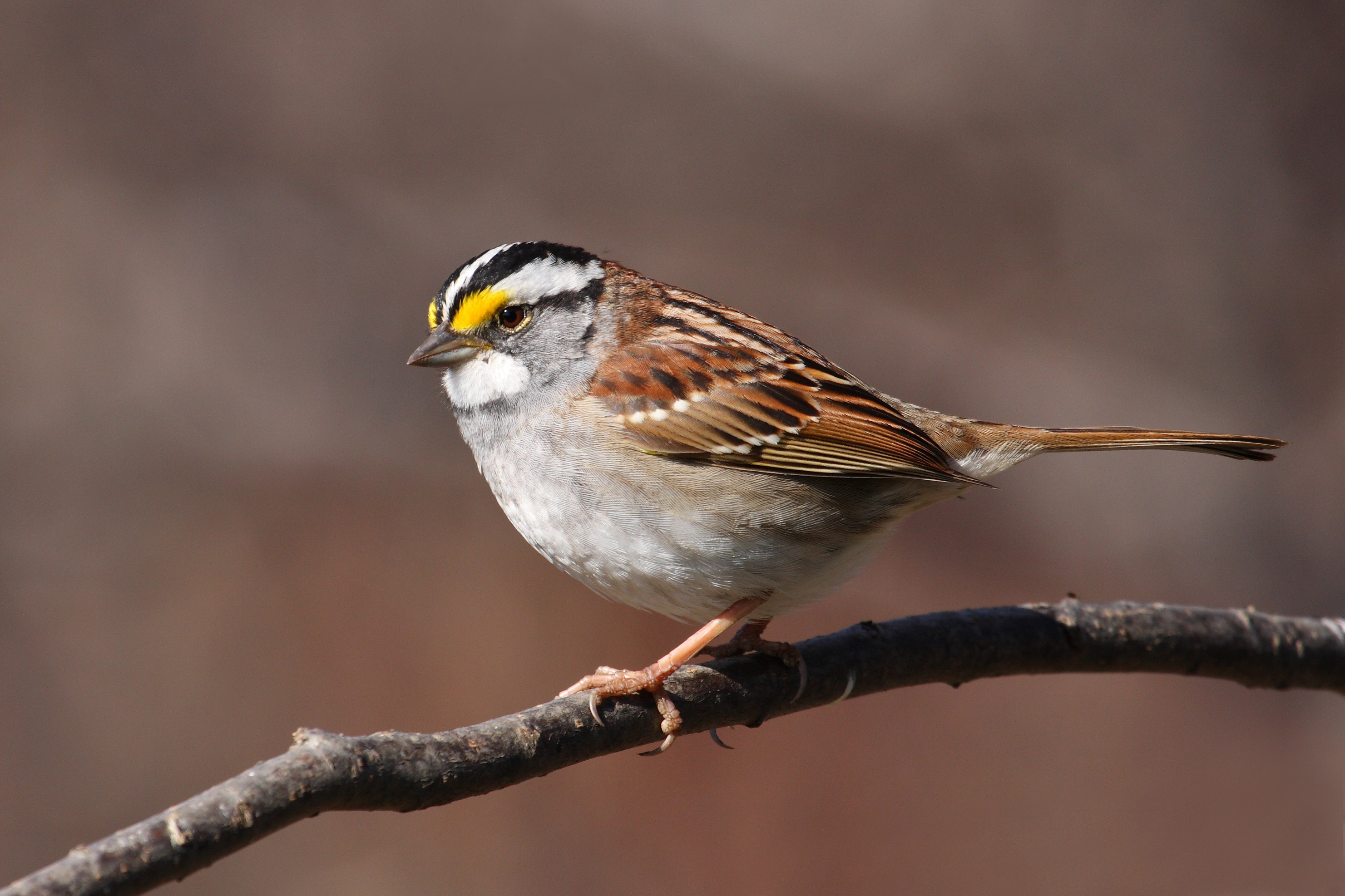White-throated Sparrow (Zonotrichia albicollis)
It was an unusually cold, wet spring last May when the white-throated sparrows sailed through on their way to the Canadian woods. The clear whistled song calling “O sweet Canada Canada Canada” if you’re Canadian, or “Sam Peabody Peabody Peabody” if you’re not, rang through the trees, announcing their visit. They were looking for forest edges, old logging sites, ponds and bog edges, and similar underbrush in the conifer forests where they could nest and support their broods.
Now on a brisk fall morning, Dave and I hear the call again on our morning walk. O Canada Canada Canada. This time perhaps it’s a lament for the summer gone. They’re on their way to southern Texas.
These sparrows are large for sparrows, measuring seven to eight inches long with a seven to nine-inch wingspan and weighing 0.8 to 1.1 ounces. They have a rounded head with a fairly prominent beak, long legs and a long, narrow tail. Their backs and wings are brown with gray undersides. They all sport a white patch on their throat and yellow patches between their eyes and their beaks. The distinct markings on their heads, however, set them apart from other birds and in fact set them apart within their own species.
Two distinct color morphs define their heads. One has black and white stripes. The other has buff on brown stripes. The difference in the two morphs goes beyond color. The black and white stripers are more aggressive and less in the doting parental line. The males are also more promiscuous, even though mating pairs stay together through the breeding season. Black and white females also sing, whereas buff on brown females don’t. The buff on brown stripers are more docile, less aggressive, and more parental. The birds know this, and each mating pair takes these traits into consideration. A black and white striped male usually mates with a buff on brown female, and vice versa. This way where one parent is aggressive in defending territory, the other parent takes on a larger role in nurturing their young. Throughout their population, the two morphs are equally distributed.
Occasionally, a white-throated sparrow will mate with a dark-eyed junco. When that happens, the offspring are usually gray and may have white throats. They will also have the white outer tail feathers from the juncos. Their songs combine the junco’s trill and a truncated version of the white-throated sparrow’s “O Sweet Canada” songs.
During the summer, the female has laid and incubated eggs for one or two broods of four or five nestlings each. Both parents fed them insects and other tasty morsels they found, mostly on the ground in the underbrush. After three and a half weeks the young are off on their own and, if it’s the first brood of the summer, the couple prepare for a second one.
And now here they are again, heading south for a relaxing, no-children-allowed winter vacation.
Photo by: Cephas
